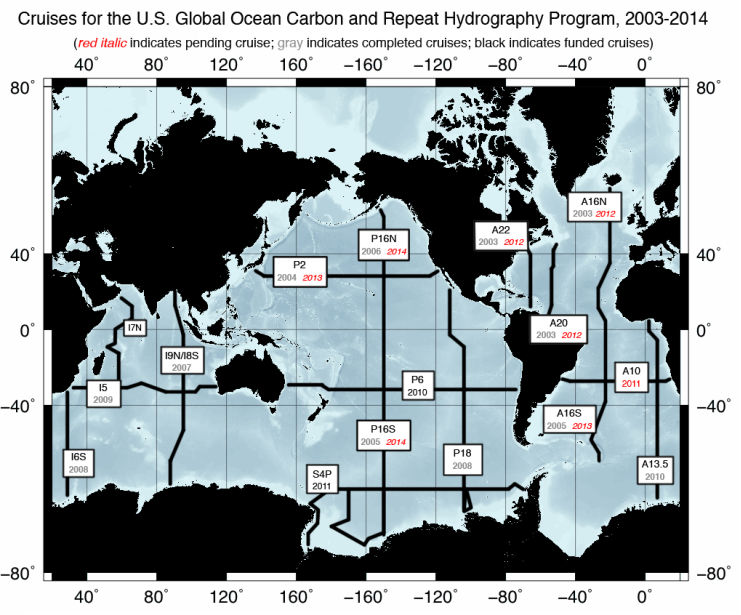CLIVAR Repeat Hydrography/CO2 Inventories
PIs: Molly Baringer and Rik Wanninkhof
This program aims to reoccupy selected trans-basin sections previously occupied over the last 50 years to document changes in heat, fresh water, carbon, nutrients, and oxygen and trace gases in the ocean. Sections, selected based on their historical record and geographic importance for capturing ocean circulation features, are occupied by NOAA and NSF investigators with the aim of approximately decadal repeats along each line. Despite numerous technological advances over the last several decades, ship-based hydrography remains the only method for obtaining high-quality, high spatial and vertical resolution measurements of a suite of physical, chemical, and biological parameters over the full water column.
Ship-based hydrography is essential for documenting ocean changes throughout the water column, especially for the deep ocean below 2 km (52% of global ocean volume). Hydrographic measurements are needed to:
- reduce uncertainties in global freshwater, heat, property and sea-level budgets,
- determine the distributions and controls of natural and anthropogenic carbon (both organic and inorganic),
- determine ocean ventilation and circulation pathways and rates using chemical tracers,
- determine the variability and controls in water mass properties and ventilation,
- determine the significance of a wide range of biogeochemically and ecologically important properties in the ocean interior, and
- maintain the historical database of full water column observations necessary for the study of long-timescale changes.
